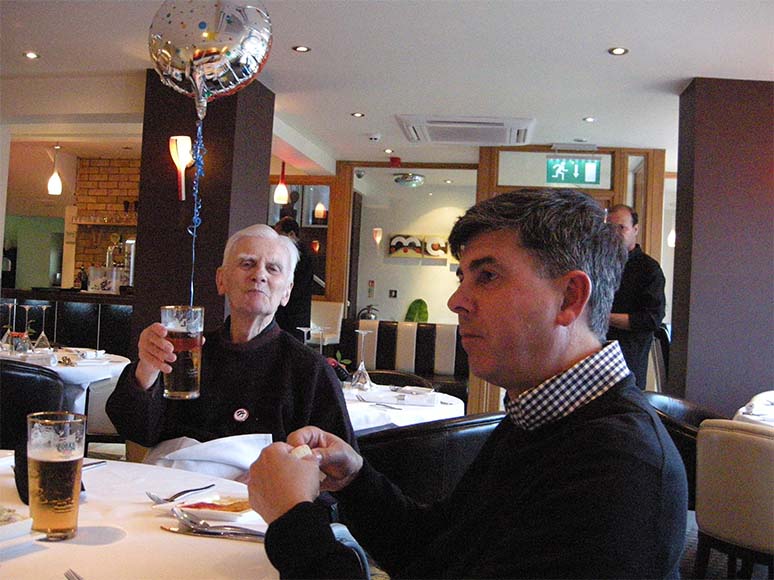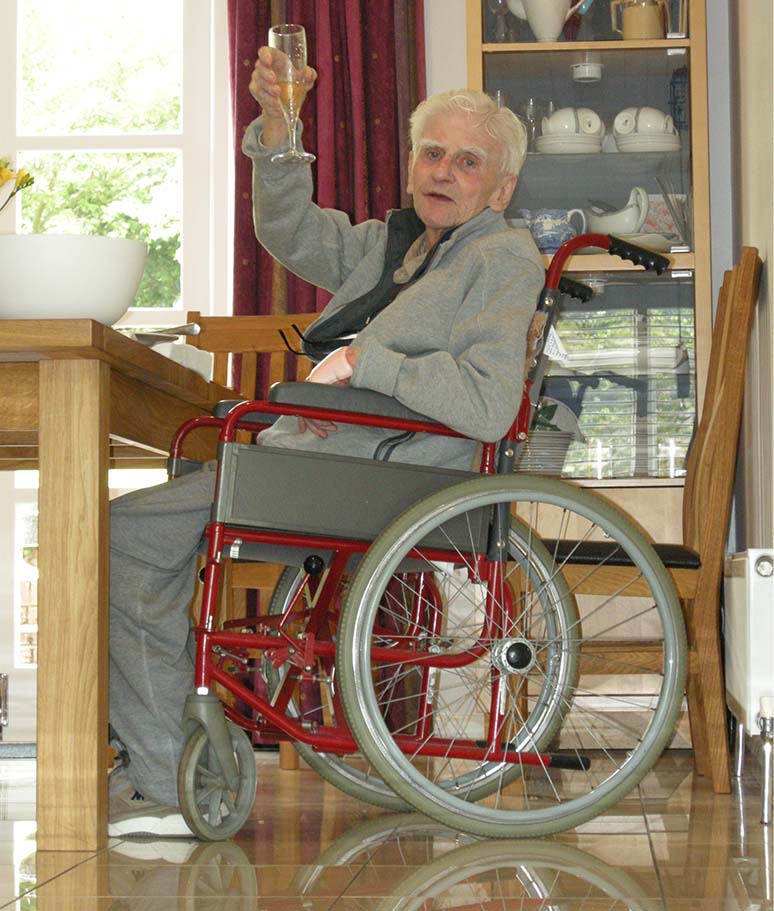Beautifully Designed to Fit the World We Live In
The Centaur is a self-balancing, two-wheeled powerchair that spins on a sixpence, fits into the space of a dining chair and lifts the user to eye-level. Its designer Paul Campbell tells his story.
My Dad’s spinal injury inspired the Centaur, a device which will help thousands of people struggling with mobility.
Bill Campbell was a designer for Ford Motor Co and I followed in his footsteps. After he retired, Dad taught at a local college helping future designers follow their dreams.
But a simple fall backwards off an office chair slowly affected his ability to walk. And the implications for this relatively obscure injury became severe.
Designed to fit the world

The fall caused an arteriovenous fistula, an abnormal connection between the arteries and the vein in the outer covering of the spinal cord, which was only diagnosed much later.
An operation gave him back the use of his legs, but it was all too late. There was now permanent damage, so his condition started to deteriorate.
I watched in dismay as he struggled with a regular wheelchair.
He was always grazing his knuckles on door frames. He couldn’t tuck his legs under the table in restaurants. Through no fault of his own, he would spill food on his lap.
At home I raised the dining room table so he could sit closer to the food. But most of the kitchen was out of reach and he would fall because he had tried to stand. It was heart-breaking.
And as a designer he hated the fact that wheelchairs looked medical.
After Dad died, I realised the wheelchair is inwardly focussed and ignores the outside world. So instead of changing the world to fit the wheelchair, I designed something that fits the world, is the right proportions and looks good. Something that spins on a sixpence and fits into the space of a dining room chair.
Style is important
The Centaur’s footplate has a stable platform so you can get in without falling over. If you can’t stand up, what about a lifting column under the chair? Why not reach that high shelf, look people in the eye?
The Centaur runs on just two wheels and uses self-balancing technology. Although it’s controlled with a joy stick on the armrest, you do need some core control to sit in it, so the Centaur may not be suitable for everyone with a spinal injury.
Aerodynamics, engineering and endurance are important, but so are style, elegance and aesthetics. I was really pleased to discover that adaptive clothing designer and runway model Alexandra Kutas is a keen supporter of Centaur Robotics. She fulfilled her dream of being a runway model, despite a spinal injury at birth which left her paralysed from the waist down.
Freedom
And record-breaking Paralympian Baroness Tanni Grey-Thompson described the Centaur as a “beautiful product that can give people the freedom to do what they want, when they want”.
That matters. I want people to lead more fulfilled lives, to be beautifully mobile. I want to end the social isolation resulting from reduced mobility.

Dad worked on many of Ford’s classic cars. They were stylish, desirable, something people were proud to be seen in.
And that’s why I’m sure Bill Campbell would love the Centaur.

Paul Campbell is design director at Centaur Robotics. Learn more about the Centaur at www.centaurrobotics.com









